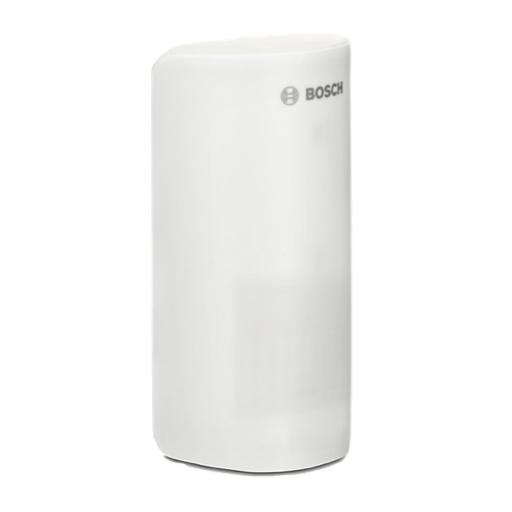Bosch RFPR-ZB-SH-EU
| Model | RFPR-ZB-SH-EU |
| Vendor | Bosch |
| Description | Wireless motion detector |
| Exposes | temperature, battery, occupancy, battery_low, tamper |
| Picture |  |
Notes
Pairing
To pair this device you have to install the device via its installation code. The installation code can be obtained by scanning the QR-code on the inside of the battery cover with your smartphone. Then get the device into pairing mode. In zigbee2mqtt navigate to "Settings" --> "Tools" and click on "Add install code". Paste the code you got from the QR-code and confirm by clicking "OK" which will get zigbee2mqtt into pairing mode automatically. Wait for your device to be joined.
Options
How to use device type specific configuration
temperature_calibration: Calibrates the temperature value (absolute offset), takes into effect on next report of device. The value must be a number.temperature_precision: Number of digits after decimal point for temperature, takes into effect on next report of device. This option can only decrease the precision, not increase it. The value must be a number with a minimum value of0and with a with a maximum value of3
Exposes
Temperature (numeric)
Measured temperature value. Value can be found in the published state on the temperature property. It's not possible to read (/get) or write (/set) this value. The unit of this value is °C.
Battery (numeric)
Remaining battery in %, can take up to 24 hours before reported. Value can be found in the published state on the battery property. It's not possible to read (/get) or write (/set) this value. The minimal value is 0 and the maximum value is 100. The unit of this value is %.
Occupancy (binary)
Indicates whether the device detected occupancy. Value can be found in the published state on the occupancy property. It's not possible to read (/get) or write (/set) this value. If value equals true occupancy is ON, if false OFF.
Battery low (binary)
Indicates if the battery of this device is almost empty. Value can be found in the published state on the battery_low property. It's not possible to read (/get) or write (/set) this value. If value equals true battery low is ON, if false OFF.
Tamper (binary)
Indicates whether the device is tampered. Value can be found in the published state on the tamper property. It's not possible to read (/get) or write (/set) this value. If value equals true tamper is ON, if false OFF.
